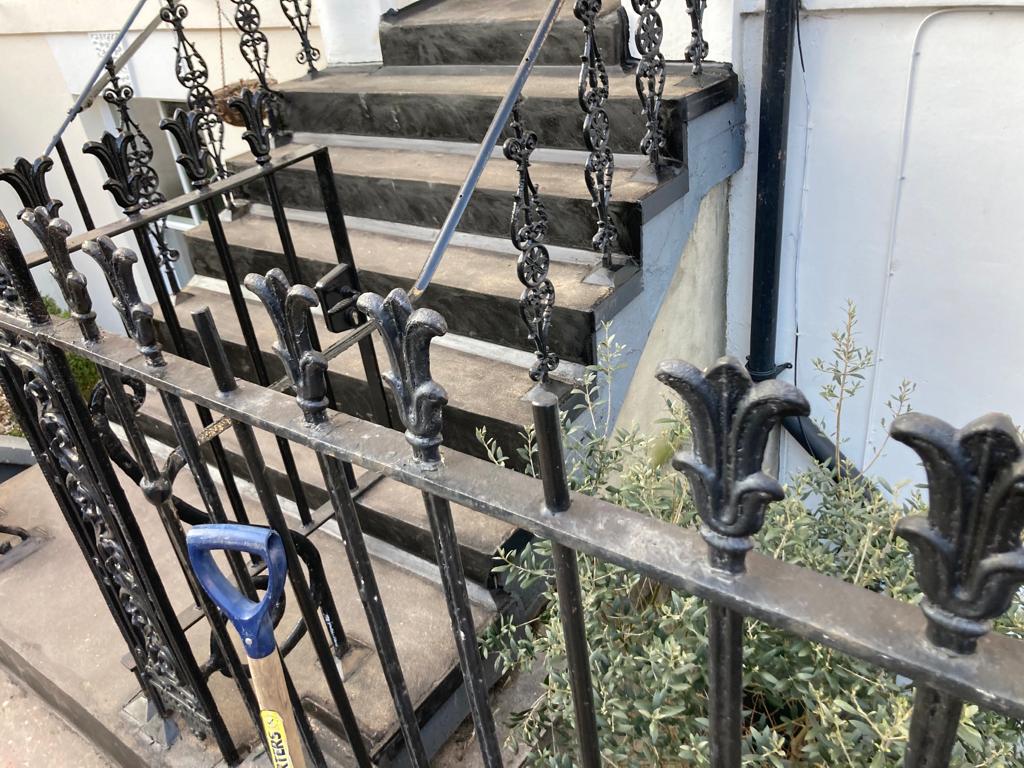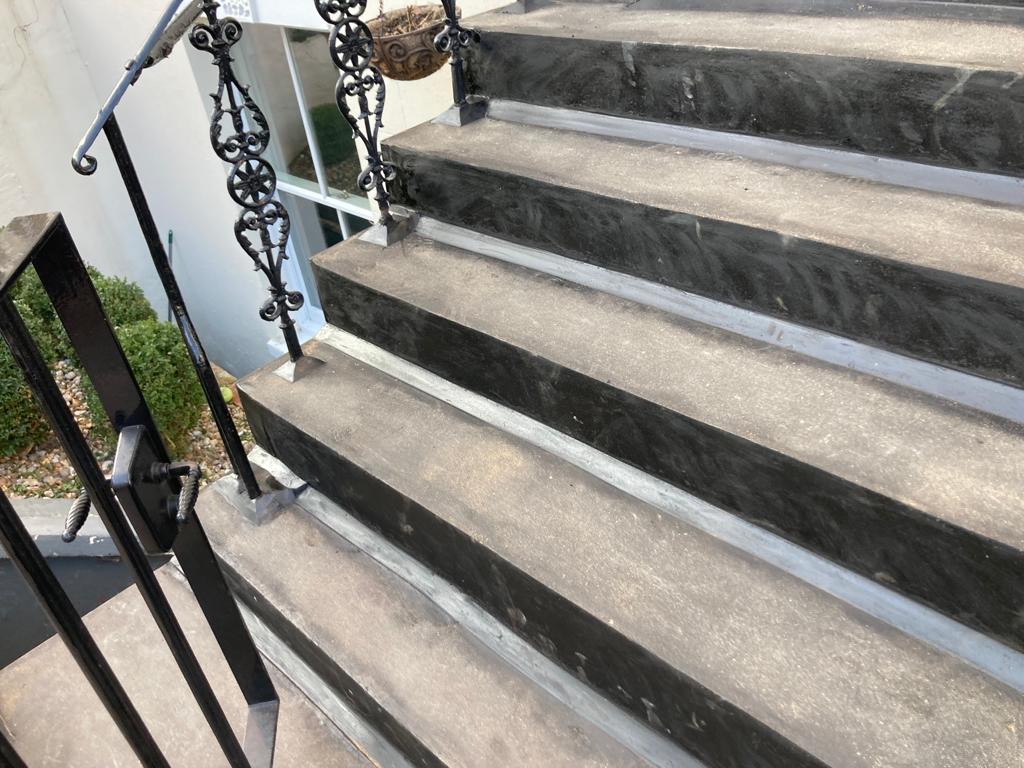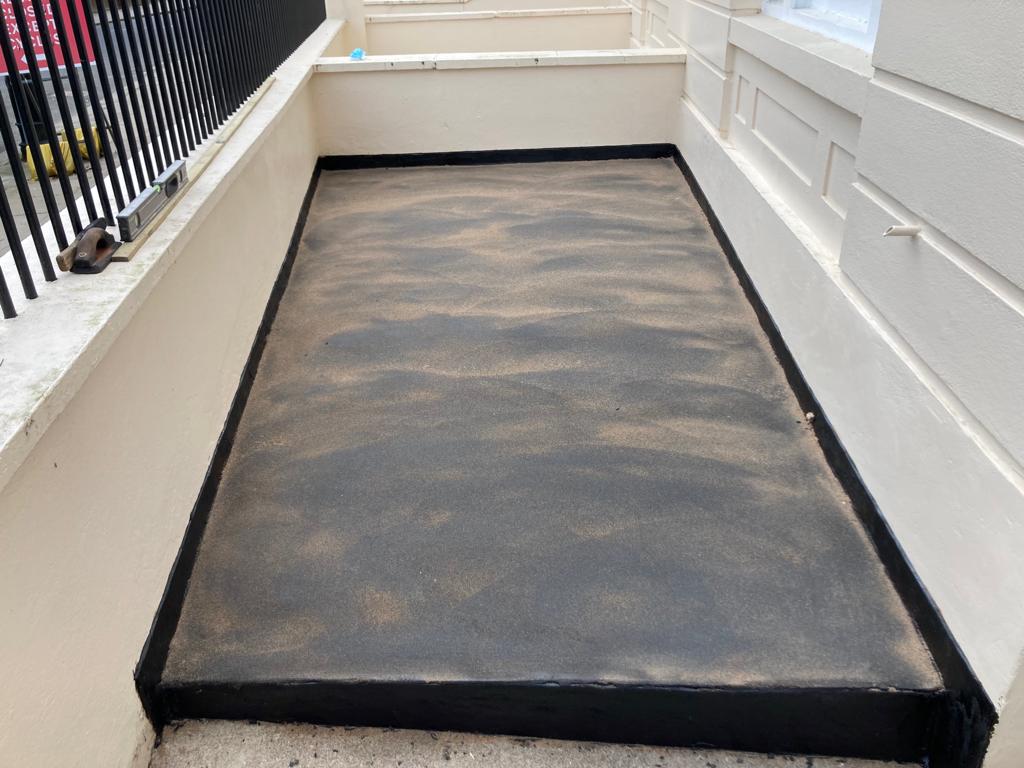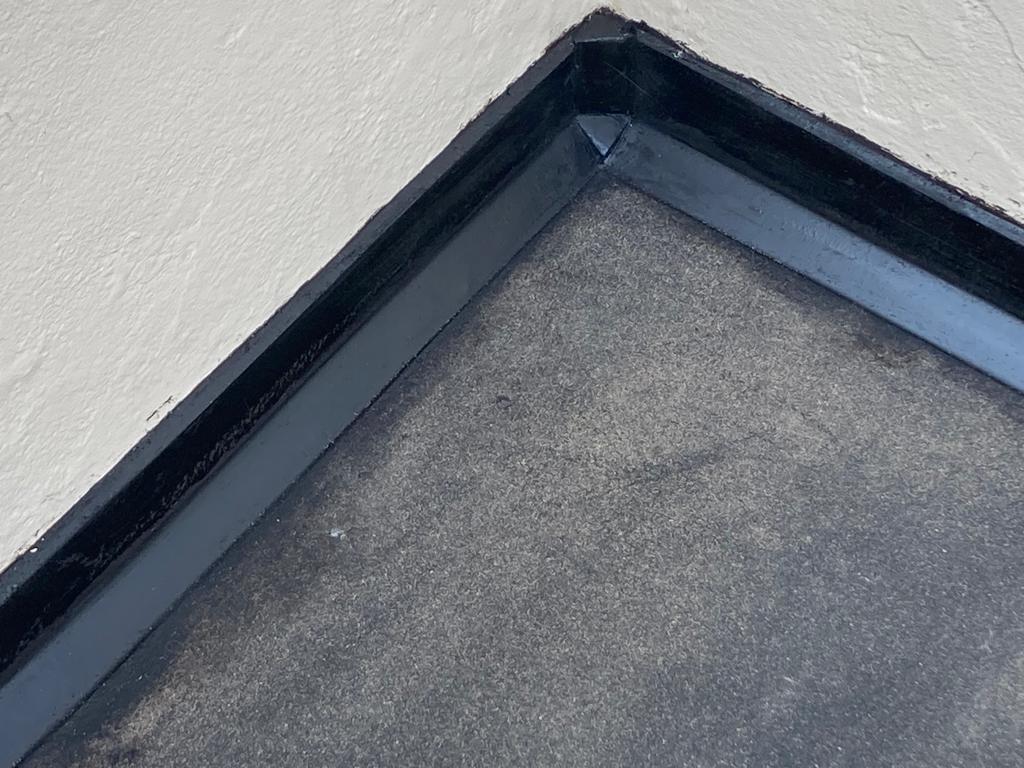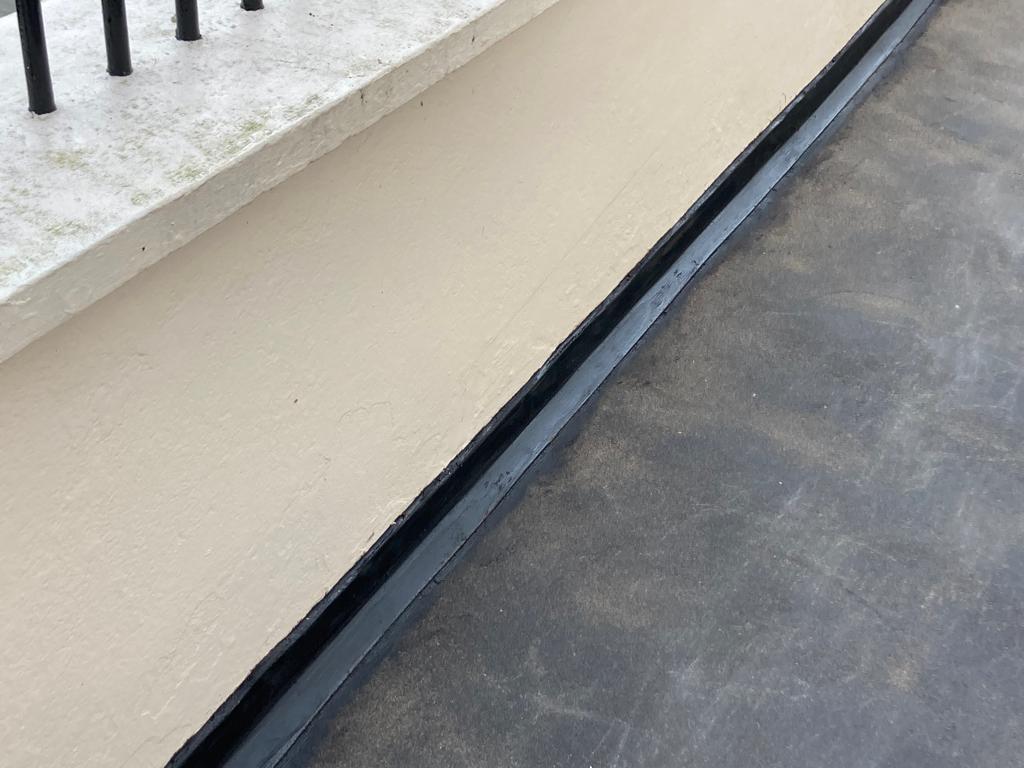I agree Our site saves small pieces of text information (cookies) on your device in order to deliver better content and for statistical purposes. You can disable the usage of cookies by changing the settings of your browser. By browsing our website without changing the browser settings you grant us permission to store that information on your device.
West London Asphalt are mastic asphalt waterproofing specialists. Our main areas of expertise include the installation of asphalt steps, balconies and roofing. We also have the ability to provide the waterproofing of walkways, car parks, and pavement light repairs. In fact, we can do anything mastic asphalt related. If you need a quote or to ask any questions about a mastic asphalt project in London or anywhere across the UK we would be delighted to assist you. Call us today on 0203 9819820.
At West London Asphalt our main passion is the waterproofing of asphalt steps and staircases. We believe nothing comes close to mastic asphalt in terms of waterproofing performance and the aesthetically pleasing finish which can be achieved.
With concrete steps mastic asphalt provides the most effective waterproofing. The asphalt membrane when installed correctly provides unbeatable protection from water ingress. Asphalt has unique properties which have resulted in it often being referred to as "The King Of Waterproofing".
Mastic asphalt is a time tested waterproofing material which has been used for more than a century. It is a carbon zero rated construction material which benefits from being extremly easy to repair if something goes wrong with it down the line. The way to fix defective asphalt is simply to cut out the defective asphalt then clean the substrate. Apply primer, then add new mastic asphalt. This makes it a painless and cost effective membrane to mantain. Additionally, this key point makes mastic asphalt a cost effective waterproofing system when you consider the products service life.
The key to a successful set of asphalt stairs is found in the correct preparation of the substrate. The key points here are the substrate must be clean, free of any moisture and primed to allow for good adhesion.
When waterproofing any steps, before mastic asphalt can be applied for the waterproofing the substrate must be prepared. If there is already a defective waterproof covering on the substrate this must be first removed. To remove an existing waterproof covering requires skill. Without the correct procedure being followed the substrate could suffer damage.
The way in which the substrate will be removed will depend upon the system in place. For liquid applied waterproofing, the correct method is to rub down the membrane using an abrasive. Once the membrane is removed the surface should be scrubbed down. Finally, the steps should be sandblasted to remove any debris, rust and paint from the substrate.
For steps which have a mastic asphalt coating, a hammer and bolster can be used to remove the existing asphalt. Once the staircase is stripped back to the substrate and existing asphalt can be removed with an abrasive. Then, the substrate should be scrubbed down and sandblasted.
In other instances you can go over the existing substrate with mastic asphalt, for example when a liquid applied membrane cannot be removed. In these instances the existing surface would be primed, then a recovery board laid down to seperate the old waterproofing coat from the new one.
1. Is the substrate level? If this is not the case, a screed such as concrete, Unibond or render must be used to get a level finish.
2. Is the substrate free of moisture? If there is any moisture on the substrate this must be dealt with. A good way to do this is with a blow torch.
3. Does the substrate have a good key? Without a good key the asphalt will not adhere. If there is not a good key it must be created.
4. Is the substrate free of dust and debris? If this is not the case the substrate should be scrubbed down and sandblasted.
Once the asphalt is level, free of moisture, has a good key and free of dust and debris, the next step is to cut chase lines along the sides of the steps. The reason you need a chase line when waterproofing concrete steps with mastic asphalt is to give a fully waterproof finish. An asphalt staircase should sit inside a chase line which is 25mm x 25mm. Asphalt steps which do not sit inside a chase line are very likely to fail way before the expected service lifetime. Once the mastic asphalt is applied to the steps, the chase line is pointed using sand and cement or a modern alternative.
The asphalt steps installation team will cut out a chase line using an angle grinder. Once this is done the substrate along with the chase lines are ready for priming.
Now a primer must be applied to both the chase line and the substrate. This will ensure the substrate and chase lines are fully sealed and help provide the best possible adhesion between the mastic asphalt and the substrate.
Due to mastic asphalt pulling any bitumen content to the surface, any primer with a bitumen content is not suitable. The best choice of primer is a high-bond one. If a bitumen based primer is useed probelms such as water ingress will develop. The reason for this is in the summer the bitumen will pull through to the surface and try to escape through the asphalt coating. This will at first create blows on the surface. Blows are small hill like bubbles. Overtime these bubbles will split comprimising the integrity of the waterproof membrane.
Once a primer is applied it will take up to 2 hours to dry and be ready for waterproofing to continue. This process can be accelerated by applying heat to the primer.
Asphalt steps have to cope with a lot of movement. This includes expansion when in the sun and contraction in cold conditions. In the UK these temperatures can have large deltas. These is especially true for steps which are subject to a lot of sunlight. This combined with the foot traffic directly upon the asphalt membrane, means it is essential for there to be movement between the membrane and the substrate below.
The way in which this is done is by applying sheathing felt to the substrate. This sheathing felt is loose laid on to the substrate and allows an excellent bond with the asphalt membrane.
Once this sheathing felt is laid down, it is time for the mastic asphalt waterproofing coats to be applied.
When waterproofing steps 2 waterproofing coats are applied. The first coat of mastic asphalt is roofing grade and the second is either recreational duty mastic asphalt or road grade asphalt. At West London asphalt we use road grade asphalt for the final coat to prevent slumping.
Mastic asphalt is applied to the area created when the chase lines were created. The asphalt applied to this area is known as "Mastic Asphalt Stringers". This asphalt is laid to a thickness of approximately 8mm in the first instance. Then a second coat is applied to bring the thickness upto approximately 15mm. It is important this asphalt is applied to sit inside the chase line to give the substrate below complete waterproofing.
All the risers on the staircase (the vertial part of the steps), must have 2 coats of mastic asphalt applied. The asphalt must be worked up and over the riser and finish on the tread above. Once 2 coats have been applied the nominal thickness of the asphalt risers should be approximately 13mm.
All of the treads on the asphalt staircaise (the horizontal part of the steps which are walked on), should be finished in 2 coats to give a finished thickness of 25mm. The first coat will be 10mm in roofing grade asphalt. As mentioned above our preferred finish with the second and final coat is to use road grade asphalt to prevent slumping. Slumping is when the asphalt sinks when exposed to extensive sunlight.
The top coat contains extra aggregates to be hard wearing so it can endure the foot traffic asphalt steps will have to experience. Road grade asphalt is also made to endure signficant fluctuations in temperatures.
Once the final coat of asphalt is applied, it is sand rubbed to draw all of the bitumen content to the surface. The reason for this is to prevent any bitumen trying to escape at a later date when exposed to prolonged sunlight. By rubbing sand into the asphalt all of the bitumen is pulled to the surface and there is no risk of asphalt blows caused by the bitumen trying to escape.
Although not always used on mastic asphalt steps. Solar reflective paint is highly advised. Although the use of road grade asphalt for the second coat means slumping is very unlikely. The addition of solar reflective paint can reduce the probability even further and get extra years out of your asphalt staircase.
If you have south facing steps we would suggest using solar reflective paint is essential. The reason for this is the amount of sun your steps will be subjected to is higher than normal.
Solar reflective paint is easy to apply. It is painted on to the finsihed asphalt steps to give a nice light grey finish. By choosing this finish you can be sure you have given your steps the maximum possibility of a long service life.
To further maximise the lifetime of your asphalt steps ypu should make sure every 5-7 years, your solar reflective paint is re-applied.
If you would like to talk to a member of our friendly team about any mastic asphalt project you have in mind, please contact us on 0203 9819820. Or just click on the button below. One of our asphalt experts will help you with any queries yoy may have.
